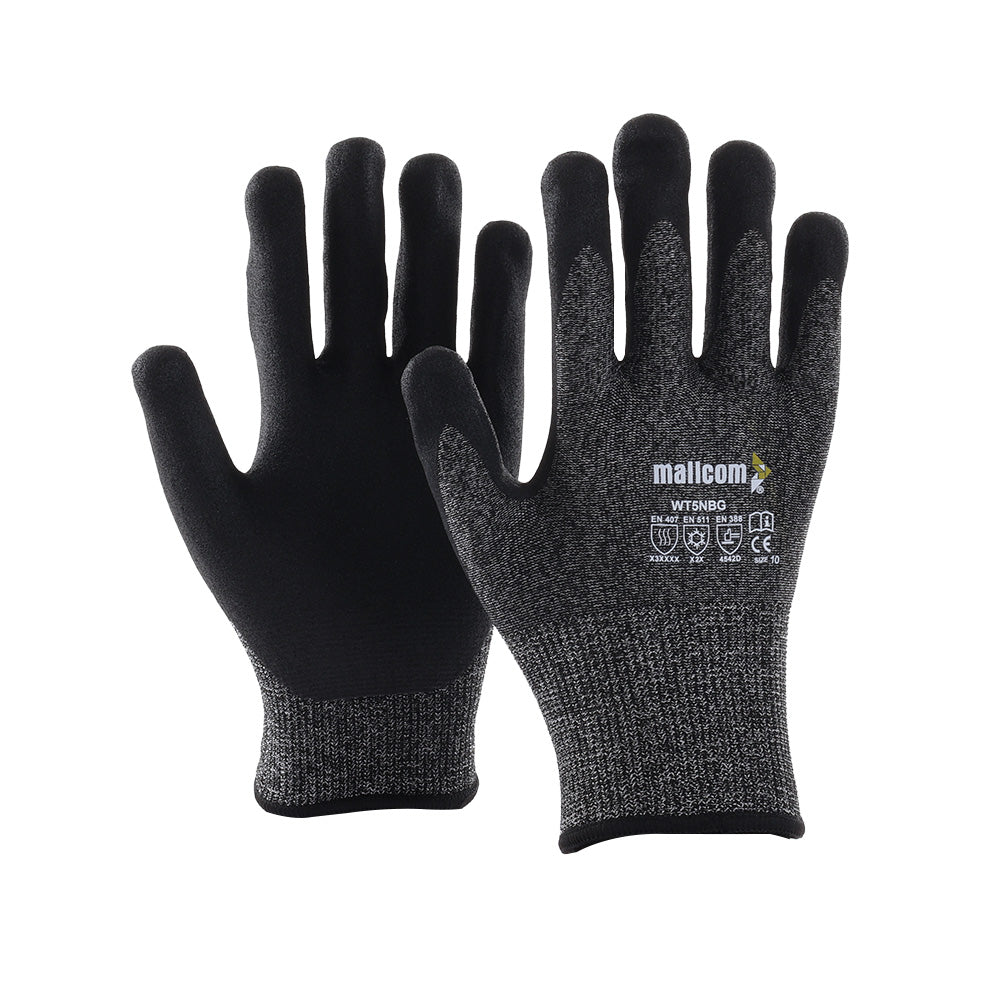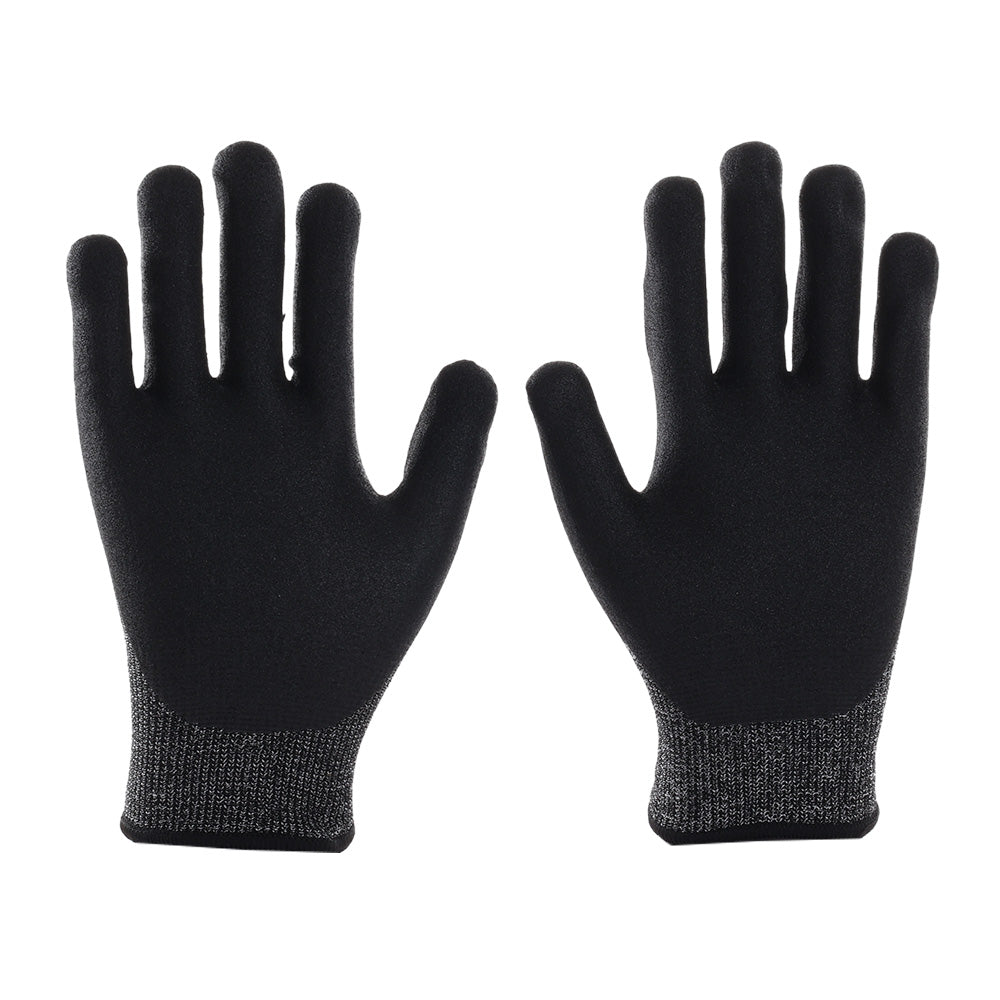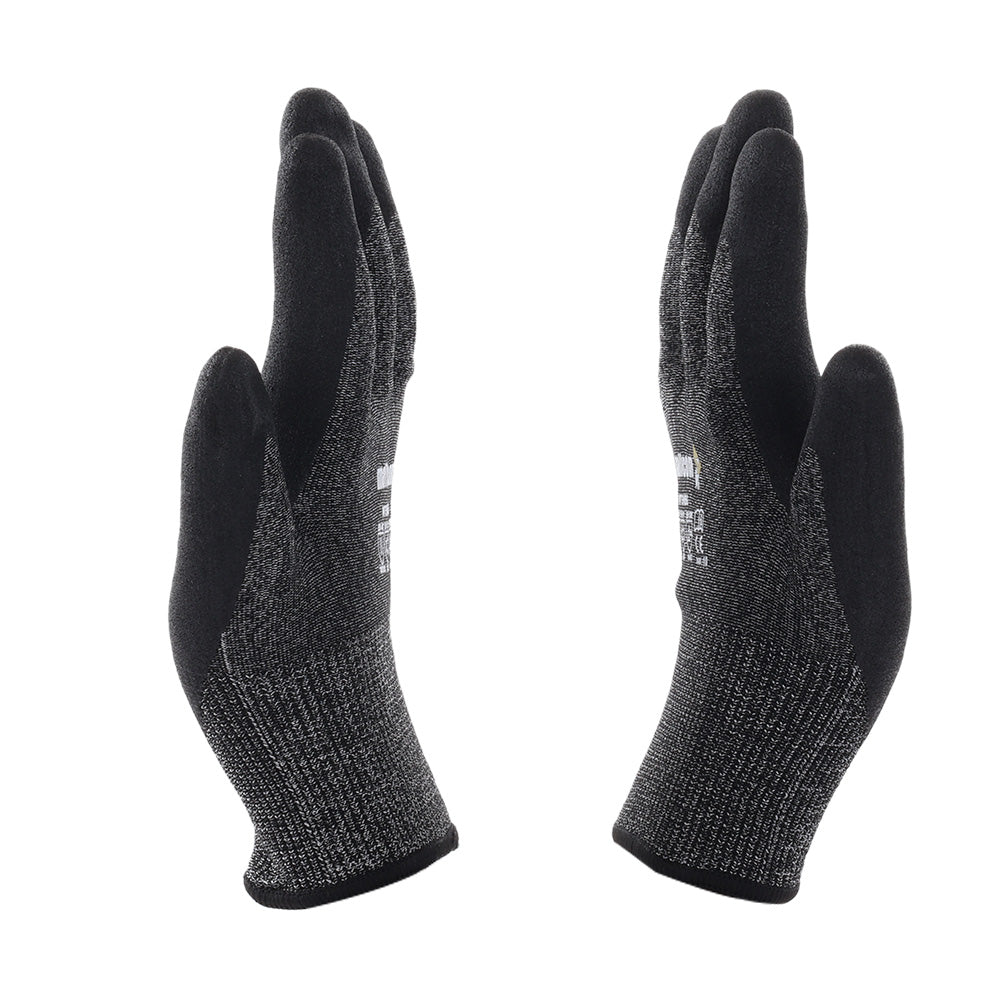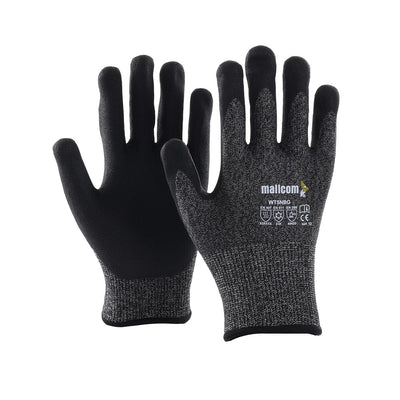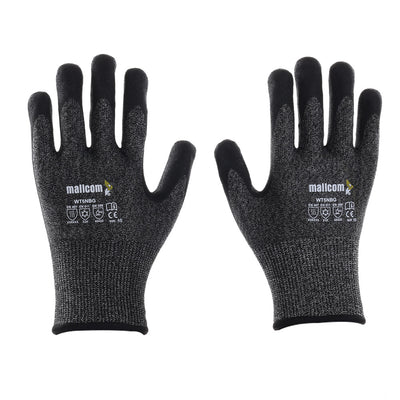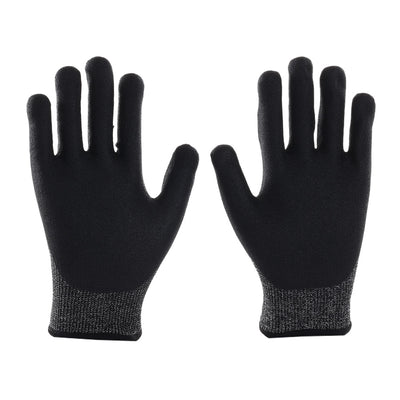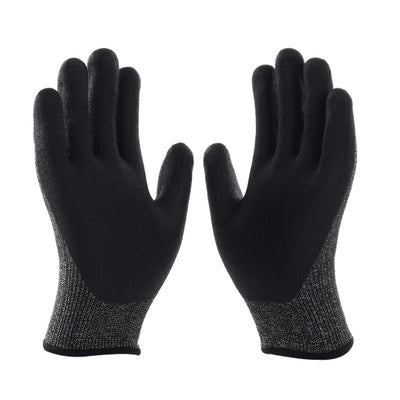WT5NBG
Share
Seamless Nitrile Gloves
-
High Cut Resistance & Visibility: 13-gauge seamless glove with a hi-vis yellow liner, made from a blend of HPPE, filament steel, fiberglass, polyamide, nylon, and spandex, offering EN 388 Cut Level 5 / ANSI A4 protection and enhanced visibility in low-light environments.
-
Superior Grip & Durability: Black sandy nitrile palm coating provides excellent grip in dry, wet, or oily conditions, along with high abrasion resistance for tough work environments.
-
Comfort & Insulation: Acrylic lining adds insulation for use in colder conditions, while the snug, ergonomic design ensures dexterity and comfort during extended wear.
Abrasion
Tear
Impact Resistant
Select Size
WT5NBG

Size Chart
How to Measure
WT5NBG

WT5NBG

EN:388:4131X
CE
EN:407
Delivery & Services

Easy Return
with our 15 days return poicy
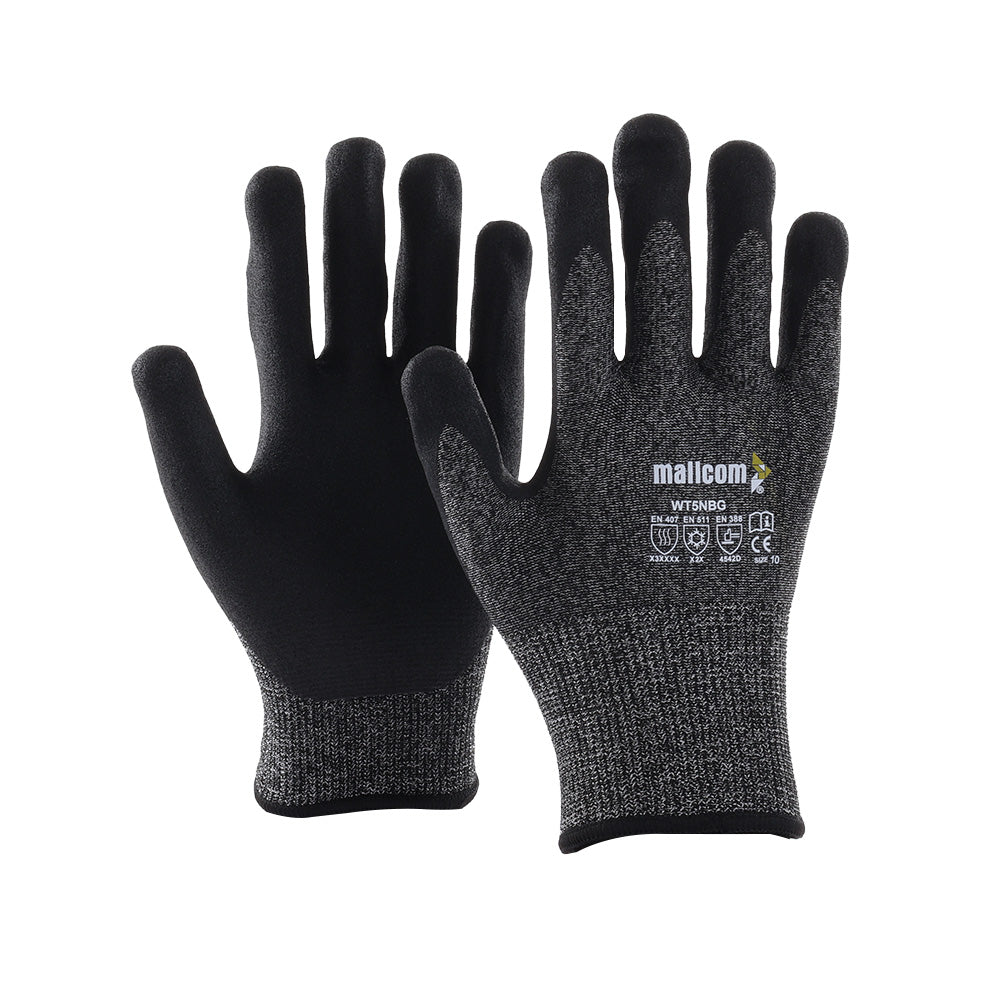
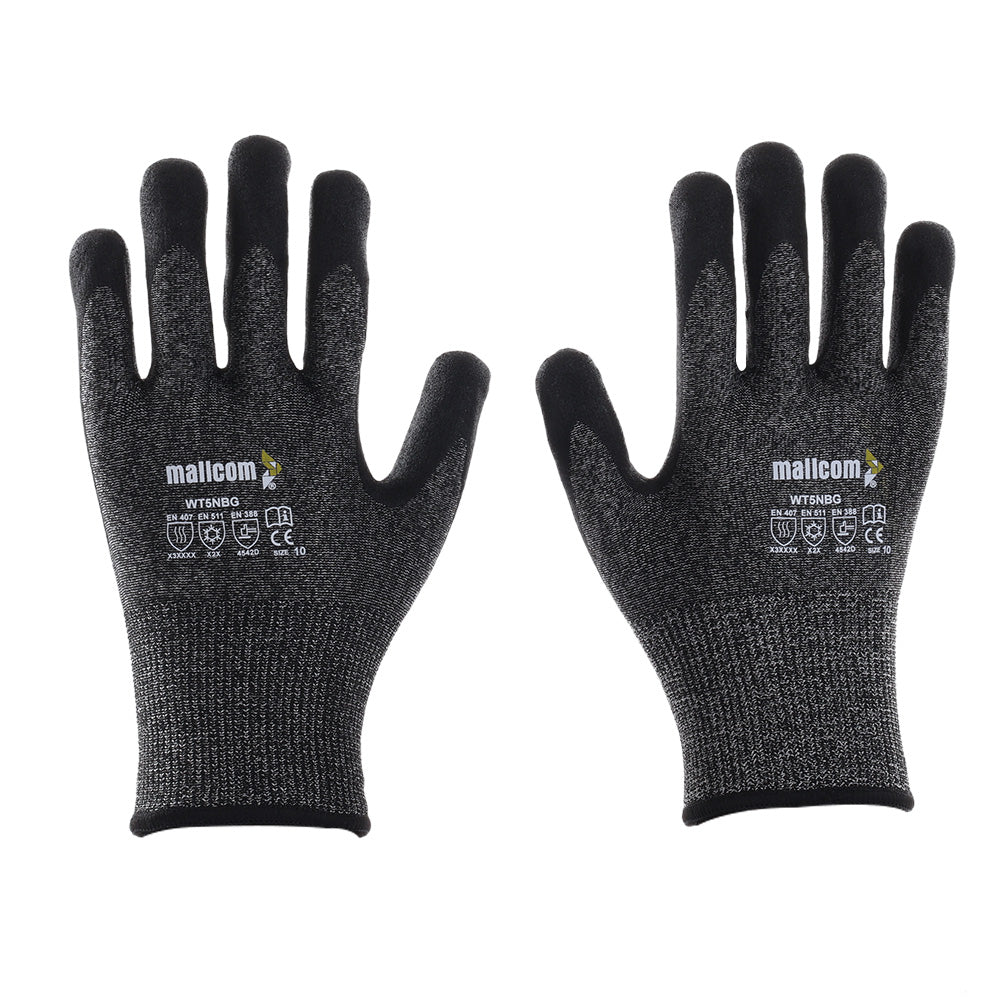
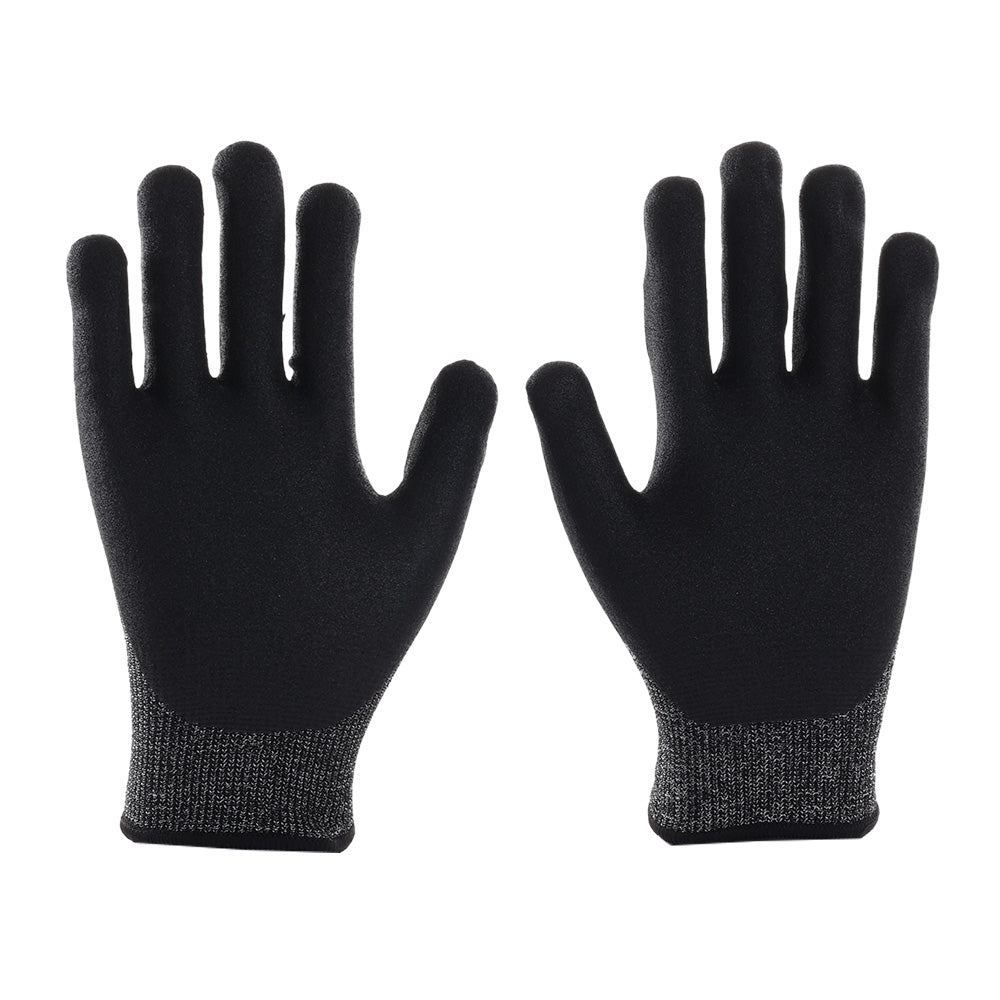
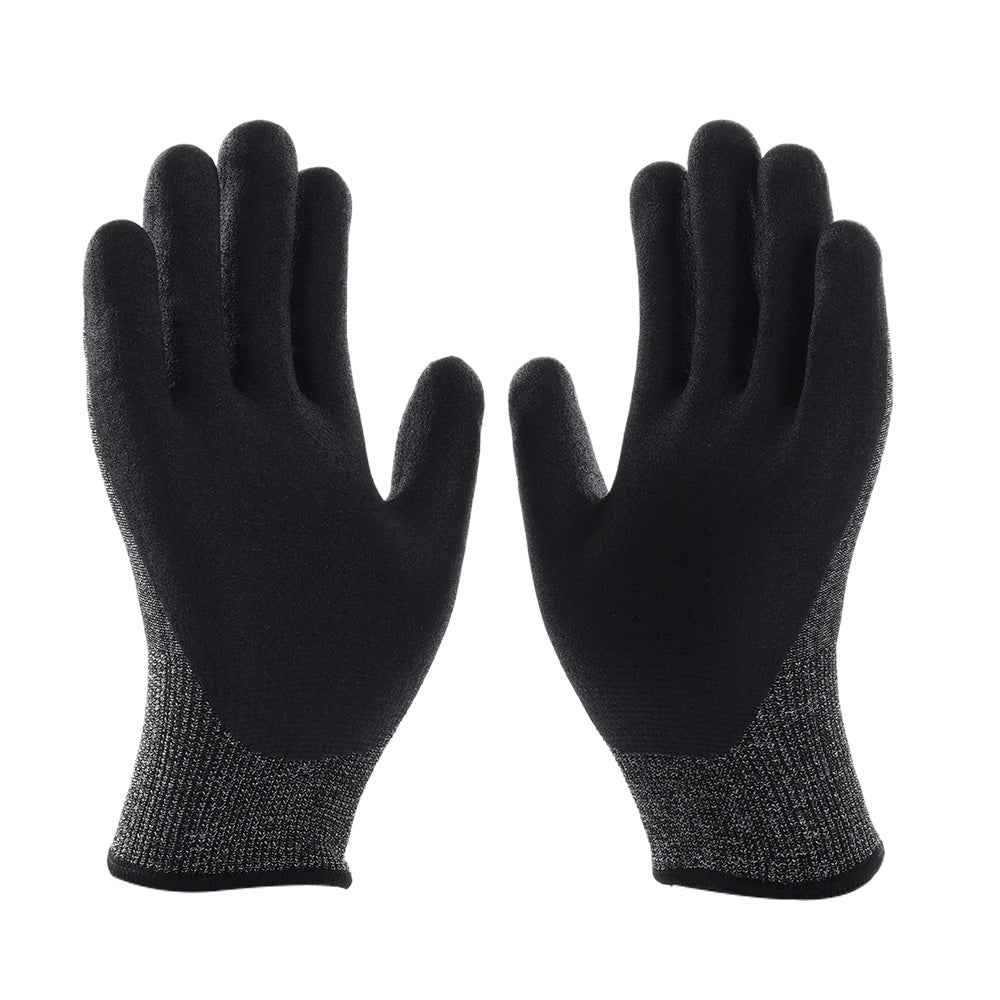
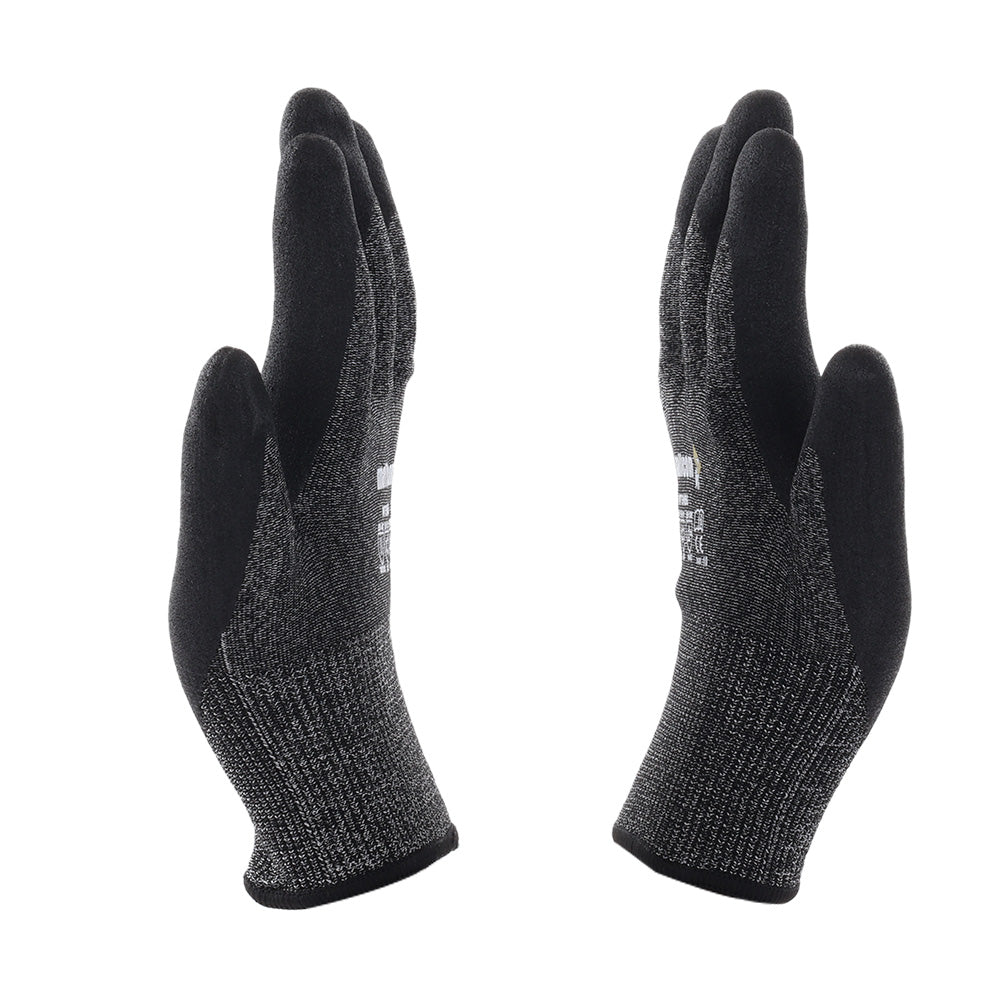
ABOUT THE DESIGN

USEFUL IN THESE INDUSTRIES
AUTOMOBILE
CONSTRUCTION
MANUFACTURING
LOGISTICS

Resistance to abrasion based on the number of cycles required to abrade through the sample glove (abrasion by sandpaper under a stipulated pressure). The protection factor is then indicated on a scale from 1 to 4 depending on how many revolutions are required to make a hole in the material. The higher the number, the better the glove.
Blade cut resistance based on the number of cycles required to cut through the sample at a constant speed. The protection factor is then indicated on a scale from 1 to 5.
Tear resistances based on the amount of force required to tear the sample. The protection factor is then indicated on a scale from 1 to 4.
Puncture resistances based on the amount of force required to pierce the sample with a standardly sized point. The protection factor is then indicated on a scale from 1 to 4.
the test is terminated. A straight blade is loaded into the machine. Weight is added to serve as a force. The blade moves across the fabric. The blade is replaced with a new one to ensure accuracy. The sample is cut five times, each with three different loads. The distance traveled to cause cut through at various forces is recorded. The data is used to determine the load required to cut through the sample.
Product Features
ABOUT THE DESIGN

USEFUL IN THESE INDUSTRIES
AUTOMOBILE
CONSTRUCTION
MANUFACTURING
LOGISTICS
Product Details
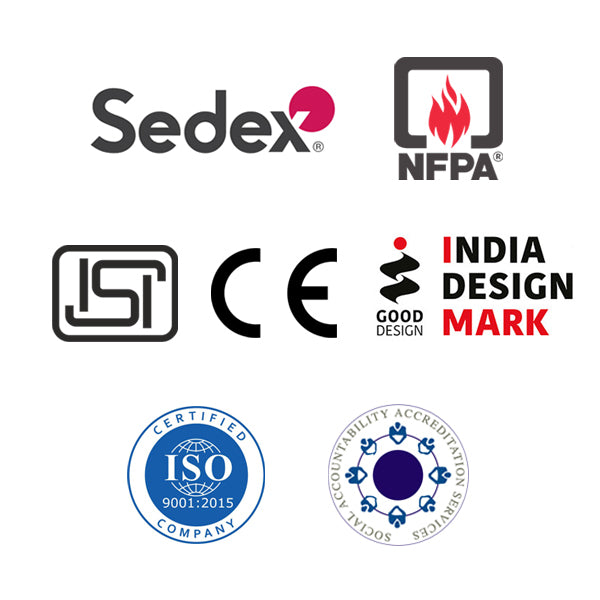
Tests
Resistance to abrasion based on the number of cycles required to abrade through the sample glove (abrasion by sandpaper under a stipulated pressure). The protection factor is then indicated on a scale from 1 to 4 depending on how many revolutions are required to make a hole in the material. The higher the number, the better the glove.
Blade cut resistance based on the number of cycles required to cut through the sample at a constant speed. The protection factor is then indicated on a scale from 1 to 5.
Tear resistances based on the amount of force required to tear the sample. The protection factor is then indicated on a scale from 1 to 4.
Puncture resistances based on the amount of force required to pierce the sample with a standardly sized point. The protection factor is then indicated on a scale from 1 to 4.
the test is terminated. A straight blade is loaded into the machine. Weight is added to serve as a force. The blade moves across the fabric. The blade is replaced with a new one to ensure accuracy. The sample is cut five times, each with three different loads. The distance traveled to cause cut through at various forces is recorded. The data is used to determine the load required to cut through the sample.


